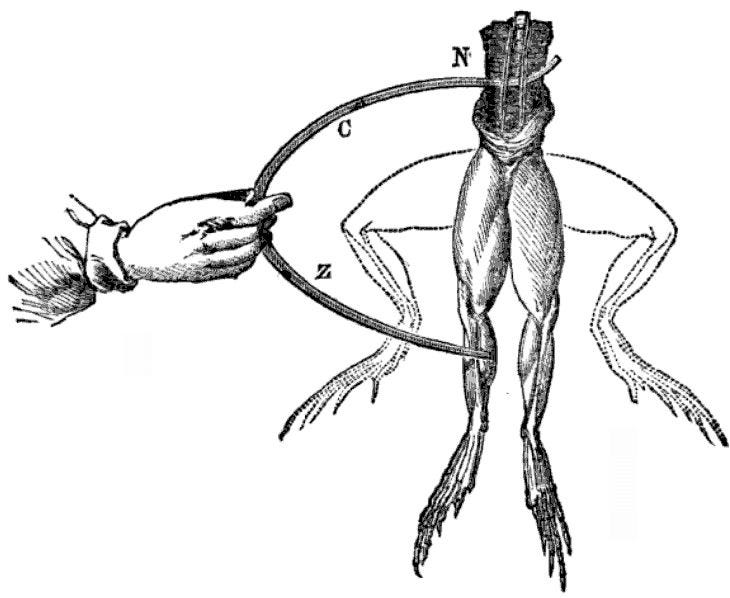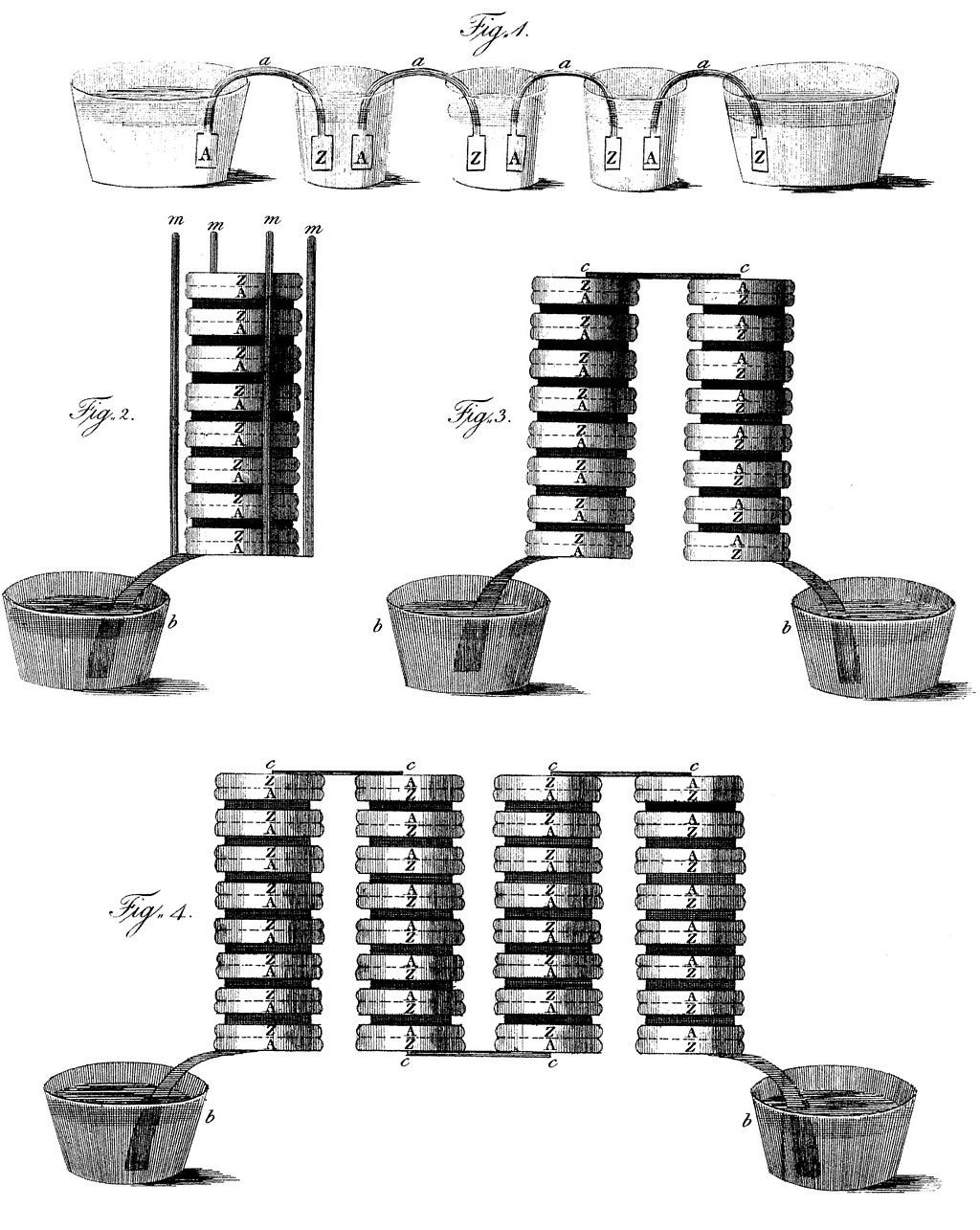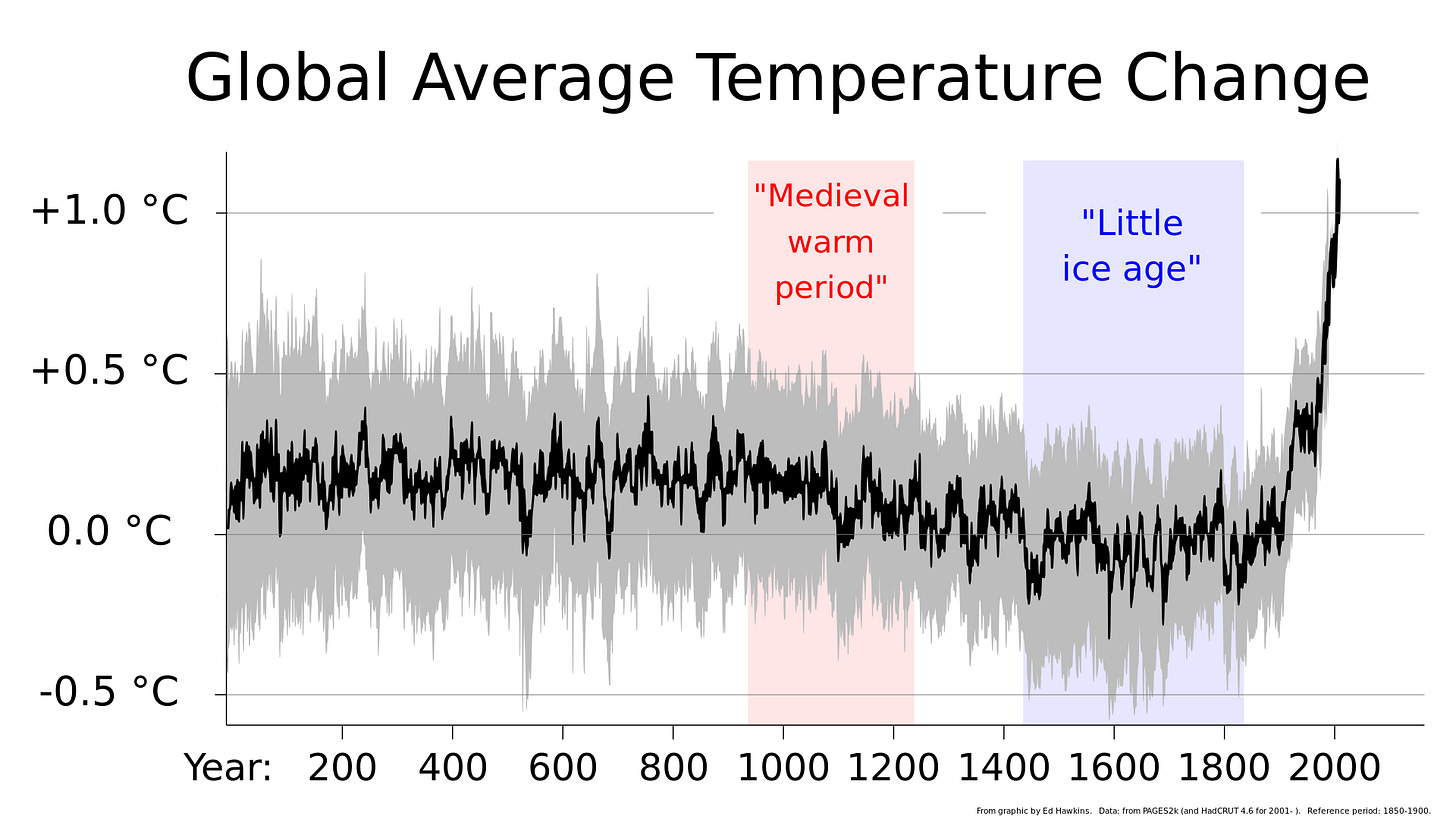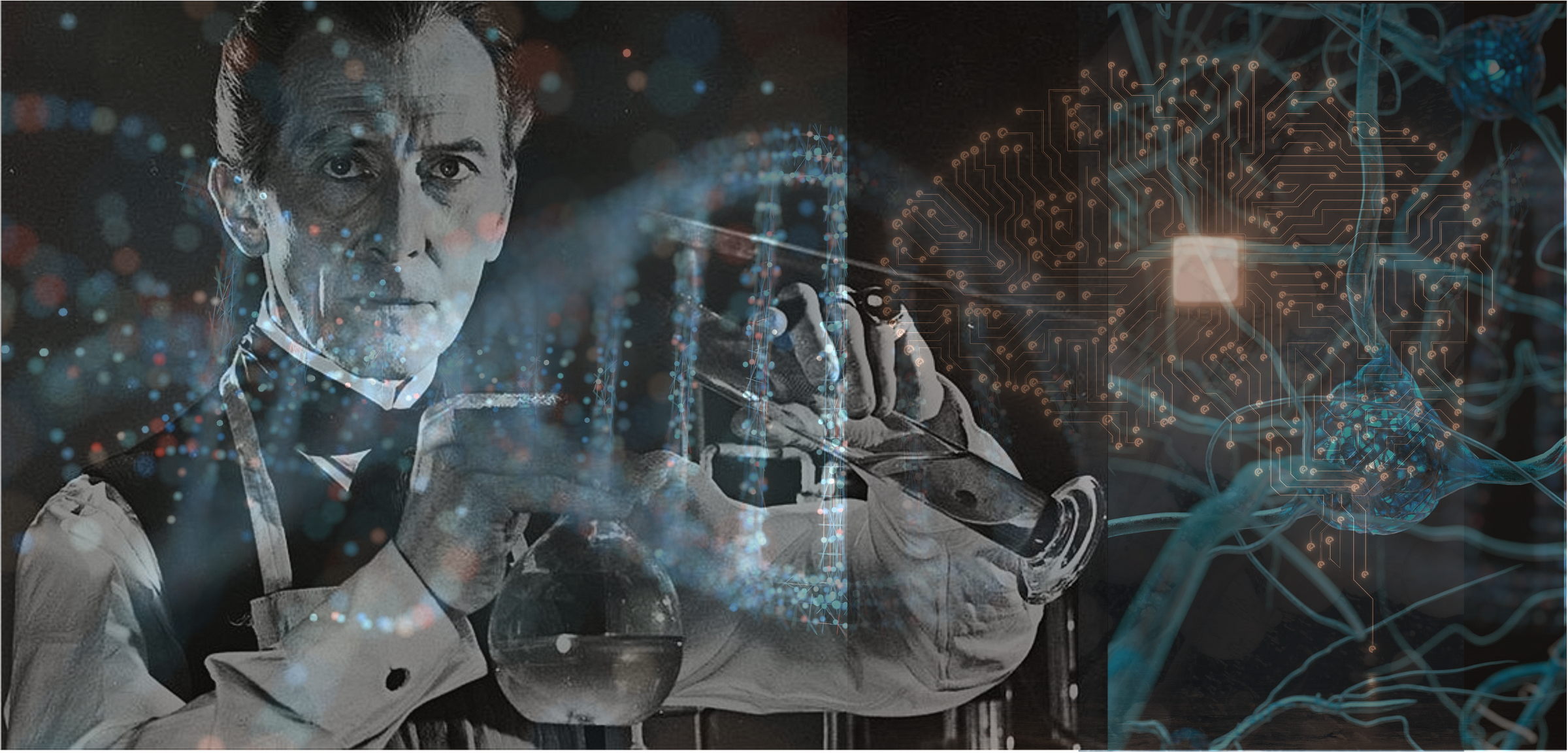Hello Interactors,
A Frankenstein announcement from Musk this week punctuated my recent fascination with the author of that popular novel, Mary Shelley. Her isolated lived experience in a time of intense technological discovery, social and geo-political unrest, AND a climate crisis rings true today more than ever.
But she also was subtlety representing a scientific movement that is largely ignored today, but just may be experiencing a bit of a resurgence in areas like biology and neuroscience.
Let’s dig in…
FRANKEN-MUSK
“It was already one in the morning; the rain pattered dismally against the panes, and my candle was nearly burnt out, when, by the glimmer of the half-extinguished light, I saw the dull yellow eye of the creature open; it breathed hard, and a convulsive motion agitated its limbs.”1
Mary Shelley was intrigued, and maybe a little scared, by the idea of electrifying organs. She admits as much in her 1831 forward of her famous novel, “Frankenstein”, first published January 1, 1818. She wrote,
"Perhaps a corpse would be re-animated; galvanism had given token of such things: perhaps the component parts of a creature might be manufactured, brought together, and endued with vital warmth."2

Bioelectrical experimentation had been happening for nearly 40 years by the time Shelley wrote this book. Luigi Galvani, an Italian physician, physicist, and philosopher demonstrated the existence of electricity in living tissue in the late 1780s. He called it ‘animal electricity’. Many repeated his experiments over the years and ‘galvanism’ remained hotly debated well into the 1800s.
I’ve been thinking a lot about Shelley and her “Frankenstein” lately. The hype and hysteria surrounding AI, human-like robots, and biocomputing make it easy to imagine. Just last week Elon Musk tweeted that his company, Neuralink, implanted its brain chip in a human for the first time. He wants to make ‘The Matrix’ a reality. Here we are some 200 years later, wanting to believe ‘perhaps the component parts of a creature might be manufactured, brought together, and endued with vital warmth.’
‘Vital warmth’ seems a borrowed phrase from another scientific movement of the time, ‘vitalism’. Vitalism is the belief that living organisms are fundamentally different from non-living entities, like computer chips, because they are governed by a unique, non-physical force or "vital spark" that animates life. A kind of teleology for which some contemporary biologists now have empirical evidence.
One prominent vitalist of the 18th and 19th century, the German physician, physiologist, and anthropologist, Johann Friedrich Blumenbach, is best known for his contributions to the study of human biology. He developed the concept of the "Bildungstrieb" or "formative drive," which he proposed as an inherent force guiding the growth and development of organisms.3 Contemporary science explains these processes through a combination of genetic, biochemical, and physical principles like encoded DNA, gene expression networks, and morphogenesis — the interactions between cells and their responses to various chemical and mechanical forces.
THE INDUSTRIALIST’S VITAL SPARK
‘Formative drive’ was a vitalist response to the mechanistic explanations of life that were prevalent in the Enlightenment period. The same mechanistic fervor that endues so many technologists today, like Musk, with vital warmth. Blumenbach argued that physical and chemical processes alone could not account for the organization and complexity of living beings. Instead, he suggested that some other vital force was responsible for the development and function of organic forms.
Vitalists had their skeptics. Chiefly among them was Alessandro Volta. He was critical of Galvani’s ‘vital spark’. In Galvani’s frog leg experiments, he discovered that when two different metals (e.g., copper and zinc) were connected and then touched to a frog's nerve and muscle, the muscle would contract even without any external electrical source. Galvani concluded that this was due to an electrical force inherent in the nerves of the frog, a concept that challenged the prevailing views of the time and eventually laid the groundwork for the field of electrophysiology.

Volta, however, believed the electrical effects were due to the metals used in Galvani's experiments. Volta’s work eventually led to the development of the Voltaic Pile, an early form of a battery. Hence the term ‘volt’. The Voltaic Pile enabled a more systematic and controlled study of electricity, which was a relatively little-understood phenomenon at the time. It provided scientists and inventors with a consistent and reliable source of electrical energy for experiments, leading to a deeper understanding of electrical principles and the discovery of new technologies.

One such technology was the invention of the telegraph in the 1830s. The availability of electric batteries as power sources is what made it possible for Samuel Morse to revolutionize long-distance communication, profoundly effecting commerce, governance, and daily life. As he wrote in his first public demonstration, “What hath God wrought?”
The mechanists gained further favor as more and more scientists, inventors, and eventually economists succumbed to the allure of reductionism. They believed understanding complex phenomena could be done by studying their simplest, most fundamental, and mechanistic parts. Including body parts.
ECHOES OF THE INDUSTRIAL AGE
It was around the time of Morse’s tinkering that Mary Shelley reissued ‘Frankenstein’. She revealed in her 1831 forward how she was influenced by the scientific and philosophical ideas of the late 18th and early 19th centuries. This included galvanism, the debates around vitalism, and the Romantic movement's reaction to the Enlightenment's emphasis on reason and science.
This was also a period marked by significant political, social, and technological upheavals. The consolidation of nation-states and the expansion of political power were central themes of this era, leading to debates over government intervention and the balance between order and liberty. Shelley's narrative, set against this backdrop, can be seen as a reflection on the consequences of unchecked ambition and the ethical responsibilities of creators, themes that are increasingly relevant in today's discussions about artificial intelligence, genetic engineering, and other forms of technological innovation.
Moreover, Shelley's personal history and the socio-political context of her time deeply informed the themes of her novel. As the daughter of Mary Wollstonecraft, a pioneering feminist thinker, Shelley was exposed from an early age to, what were then, radical ideas about gender, society, and individual rights. Her own experiences of loss, isolation, and vulnerability were compounded by the societal upheavals of the Little Ice Age and the dawn of the Industrial Revolution. "Frankenstein" is imbued with a profound sense of existential questioning. It critiques the dehumanizing aspects of technological and industrial progress — themes that resonate with many today.

Like the early parts of the Industrial Revolution, we are living in a period of transforming economies, social structures, and daily life, ushering in new forms of labor, consumption, and environmental impact. The creation of Shelley’s ‘Creature’ can be seen as a metaphor for the unforeseen consequences of industrialization, including the alienation of individuals from their labor, from nature, and from each other.
Shelley's narrative warns of the dangers of valuing power and progress over empathy and ethical consideration, a warning that remains pertinent as society grapples with the implications of rapid technological advancement and environmental degradation. Mechanistic reductionism, with its emphasis on dissecting complex phenomena into their most basic parts, undeniably continues to dominate much of science, technology, and conventional thought.
Mary Shelley's "Frankenstein," while serving as a cautionary tale about the hubris and potential perils of unchecked scientific and technological ambition, has paradoxically also fueled the collective imagination, inspiring generations to dream of creating a human-like entity from disparate parts and mechanisms.
Yet, there is an emerging renaissance that harks back to the holistic perspectives reminiscent of early vitalism. As scientists increasingly traverse interdisciplinary boundaries, embracing the principles of holism and complexity science, they are uncovering new patterns, principles, and laws that echo the intuitions of early vitalists.
The groundbreaking research of Michael Levin at Tufts University, with its focus on bioelectric patterns and their role in development and regeneration, offers a compelling empirical bridge to Blumenbach’s ‘formative drive’. While Levin's work eschews the metaphysical aspects of a "life force," it uncovers the intricate bioelectric networks that guide the form and function of organisms, echoing vitalism's fascination with the organizing principles of life.
This shift acknowledges that life's essence may not be fully captured by reductionist views alone. Levin shows how it’s not the mechanisms of DNA that unlock the mysteries of biological organization but the communication between cells and their environment. It points towards a more integrated understanding of the natural world that respects the intricate interplay of its myriad components.
Shelley’s pondering remains relevant today, “perhaps the component parts of a creature might be manufactured, brought together, and endued with vital warmth." Either way, "Frankenstein" continues to remind us of the need for humility and ethical consideration. After all, as we navigate the complex frontier between mechanistic ambition and our fragile, emergent, and interconnected life neurobiology tells us our own neural connections are being reshaped by both environmental interactions and cognitive activity, reflecting principles of embedded cognition those early vitalists would surely endorse.
Shelley, M. (1818). Chapter 5. Frankenstein, or the Modern Prometheus (Lit2Go Edition). Retrieved January 31, 2024, from https://etc.usf.edu/lit2go/128/frankenstein-or-the-modern-prometheus/2295/chapter-5/
Kimberley, M. (2011). Neuroscience and Young Adult Fiction: A Recipe for Trouble?. M/C Journal, 14(3). https://doi.org/10.5204/mcj.371
Reill, P. Vitalizing Nature in the Enlightenment. University of California Press. 2005.












